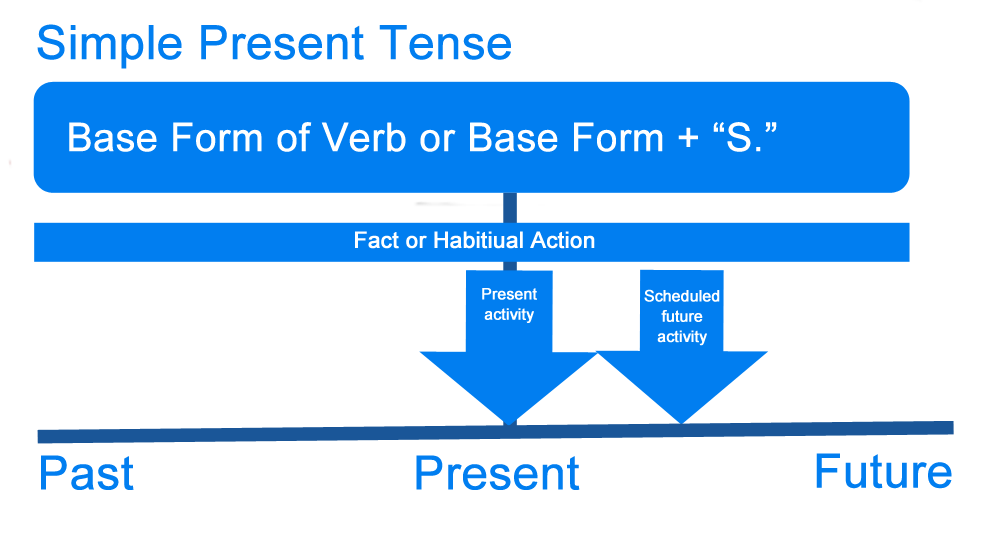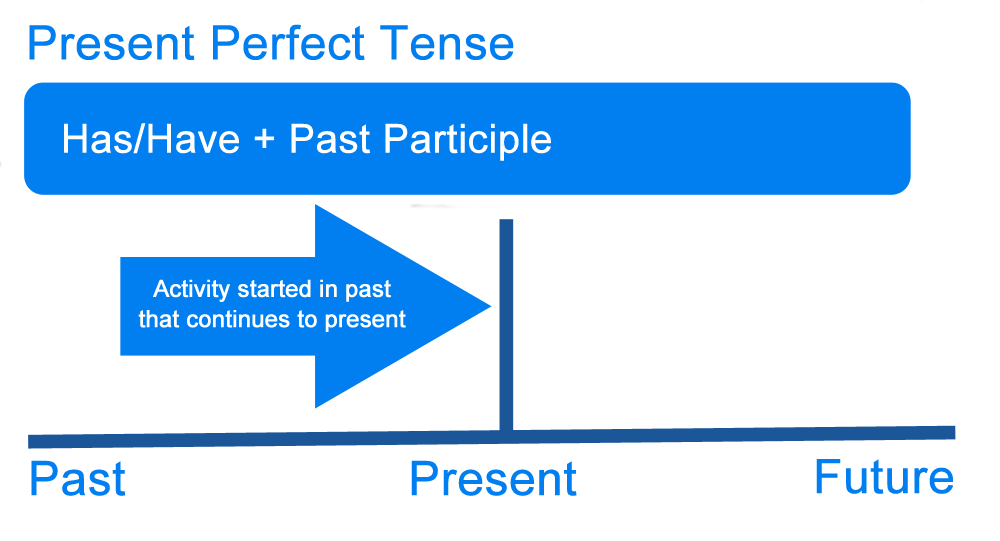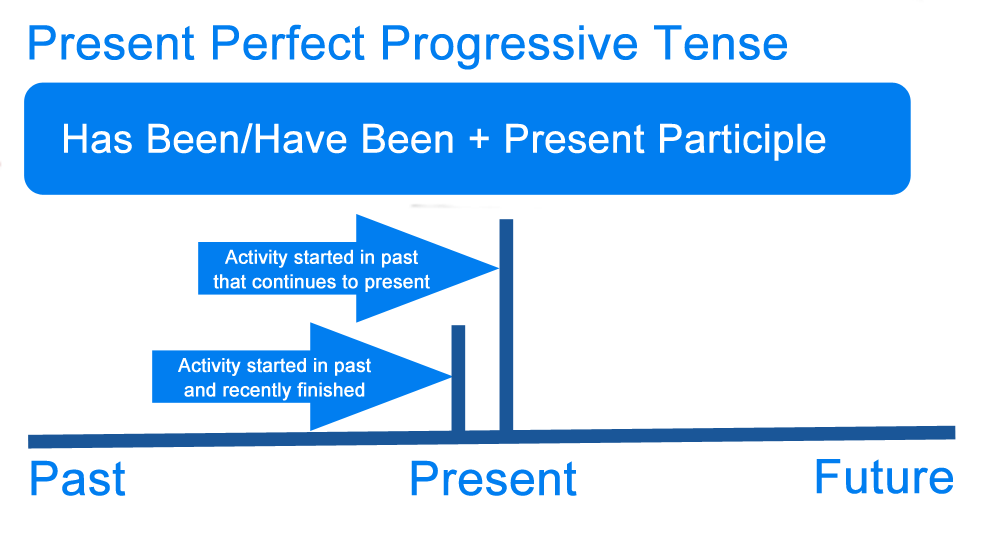Present tense definition: The present tense signals an action that is currently going on or habitually performed.
What is Present Tense in English?
What does past tense mean? The present tense of verbs expresses events or actions that are occurring now, relative to the speaker—or to actions that are habitually performed and may not necessarily be happening right now.
These actions are general truths or they are happening now.
Present Tense Forms
There are four forms of the present tense. They include:
- simple present
- He jumps.
- present progressive
- He is jumping.
- present perfect
- He has jumped.
- present perfect progressive
- I have been jumping.
Four Types of Present Tense
What is a present tense verb? Here are the four present tenses in English. We have definitions and examples of each so you can learn past tense.
What is the Simple Present?
What is the simple present tense? The simple present is generally used for actions that are factual, normal, or regular in occurrence, sometimes called habitual actions. Habitual actions are actions that occur in the present but are not necessarily happening right now.

To form the simple present:
- Subject + base form of verb
- add “s” to third person singular
Example:
- Handy, a 46-year-old who works answering phones at a car service, has been raising her family alone for nearly a decade, enduring constant financial hardship and even tragedy. –CBS News
The simple present is used to express:
- facts, truths
- Shane lives in Canada.
- routines
- Shane washes his car on Sundays.
- states of being
- Shane is happy.
- events that are certain or cannot be changed
- The meeting starts at noon.
- future events
- Shane works tonight.
What is the Present Progressive Tense?
What does present progressive mean? The present progressive expresses actions that are happening now or that are in progress.

To form the present progressive:
- Subject + am/is/are + present participle (and “-ing” to end of the verb)
Example:
- The feeling around the team is that White is going to prove to be worth the wait. –NBC Sports
The present progressive is used to express:
- actions that are happening now
- Emmet is watching television.
- actions that are in progress
- They are completing a project together.
The present progressive can also be used for future events.
- Subject + am/are + going + infinitive
- I am going to wash the car tomorrow.
What is the Present Perfect Tense?
What does present perfect tense mean? The present perfect tense expresses actions that happened at time that is not specific and actions that started in the past but continue to the present.

To form the present perfect:
- Subject + has/had + past participle of verb
The present perfect is used to express:
- actions in the past of indefinite time
- I have traveled to Paris.
- actions that started in the past but continue to present
- My mom has been a clerk her entire professional career.
What is the Present Perfect Progressive?
What does present perfect progressive mean? The present perfect progressive tense expresses actions that began in the past and continue to the present and actions that have recently stopped.

To form the present perfect progressive:
- Subject + has/had + been + present participle (and “-ing” to end of the verb)
The present perfect progressive is used to express:
- actions that began in the past but continue to present
- The baby has been crying for hours.
- actions that have recently stopped
- I have been waiting for you.
Other English Tenses
 The above examples covered all of the various kinds of present tense verbs. English also has a present tense and a future tense.
The above examples covered all of the various kinds of present tense verbs. English also has a present tense and a future tense.
What is the Past Tense?
What does past tense mean? In general, the past tense expresses events that have occurred before now.
- They cleaned up after dinner.
- John rode his bike to work.
What is the Future Tense?
What does future tense mean? In general, future tense expresses actions that will occur at a future date.
- She will attend high school next year.
- They will live happily ever after.
Summary: What is the Present Tense?
Define present tense: In grammar, the definition of present tense is a tense signaling an action that is currently going on or habitually performed.
In summary, the present tense:
- is used to express actions that occur now
- has four forms including: simple, present perfect, present progressive, and present perfect progressive
Contents
